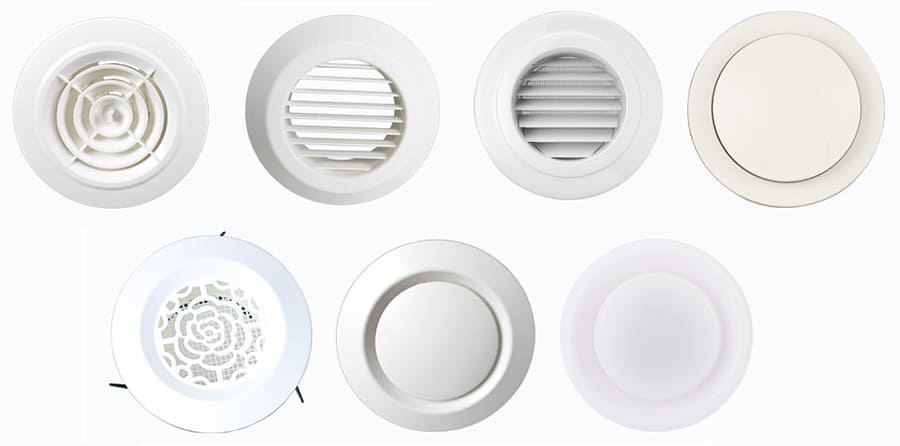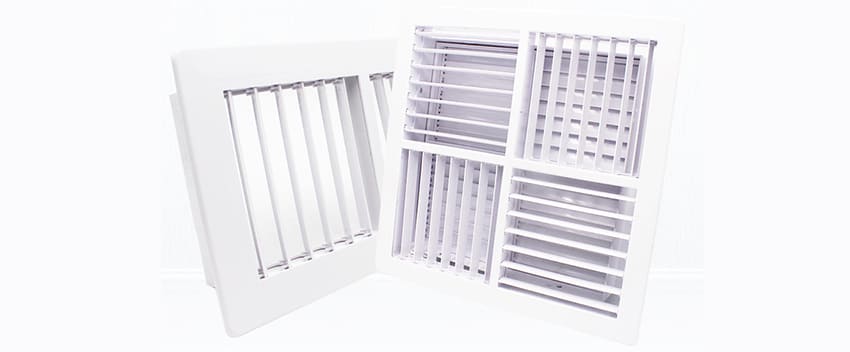Air diffusers are an essential component of HVAC systems, responsible for distributing air evenly throughout a room or building. Traditionally made from metals like aluminum or steel, diffusers are now increasingly crafted from various non-metal materials. This shift in material choice is not just a trend; it is driven by significant advantages that non-metal diffusers offer over their metal counterparts. This article explores the myriad benefits of opting for non-metal air diffusers in HVAC systems, emphasizing why they might be a superior choice in many scenarios.
Overview of Non-Metal Materials Used in Air Diffusers
Materials Commonly Used
Non-metal air diffusers are primarily made from materials such as high-quality plastics and advanced composites. These materials are selected for their durability, flexibility, and overall performance in HVAC applications.
Comparison with Metal Diffusers
When compared to metal, non-metal materials typically offer enhanced corrosion resistance and can be much lighter. This section delves into these properties, showcasing how they translate into real-world benefits for users and installers of HVAC systems.
Properties of Non-Metal Materials
1. Durability and Maintenance: Non-metal materials such as plastics are often resistant to the elements, which means they do not rust, corrode, or degrade as metals can when exposed to moisture or chemicals. This inherent resistance makes them ideal for use in environments with high humidity or corrosive conditions.
2. Lightness and Flexibility: These materials are significantly lighter than metals, which simplifies the installation process. Their flexibility also allows for more innovative designs and shapes, enabling custom solutions for specific architectural needs.
3. Aesthetic Versatility: Non-metal diffusers can be produced in a wide range of colors and finishes without the need for additional painting or finishing, which is often necessary with metal. This makes it easier to match them with the interior design and aesthetics of any space.
Each of these properties contributes to why non-metal diffusers are gaining popularity in the design and implementation of modern HVAC systems. By understanding these materials’ unique attributes, it becomes clear why they are often a preferred choice over traditional metal options.

Advantages of Non-Metal Air Diffusers
1. Corrosion Resistance
Enhanced Durability: Non-metal air diffusers excel in environments where moisture and chemical exposure are common. Unlike metal, materials like plastic and composites do not corrode or rust. This resistance to corrosion not only extends the lifespan of the diffusers but also reduces the frequency and cost of replacements.
Maintenance Savings: Facilities benefit from lower maintenance costs due to the durability of non-metal diffusers. The absence of rust and corrosion eliminates the need for frequent painting or sealing, a common requirement for maintaining metal diffusers.
2. Weight Reduction
Ease of Installation: The lightweight nature of non-metal diffusers makes them easier and safer to install, especially in ceiling applications. This can lead to quicker installation times and reduced labor costs.
Structural Benefits: Lighter weight means less strain on building structures and mounting systems. This is particularly advantageous in modular or lightweight construction where additional weight may compromise structural integrity.
3. Cost Effectiveness
Lower Initial Costs: Often, non-metal materials are less expensive to manufacture and purchase than their metal counterparts. This cost advantage makes them an attractive option for large-scale installations or budget-conscious projects.
Long-term Financial Benefits: The combination of reduced maintenance and longer lifespan leads to significant cost savings over the life of the HVAC system, making non-metal diffusers a financially sound investment.
4. Improved Air Quality
Healthier Environments: Non-metal diffusers are less likely to harbor bacteria and molds since they do not degrade or corrode. This can lead to better indoor air quality, especially in sensitive environments like hospitals or schools.
No Off-gassing: Some metals can emit harmful substances as they age or corrode. Non-metal diffusers typically do not have this problem, making them safer for indoor use where air quality is a critical concern.
5. Aesthetic Flexibility
Customizable Designs: Non-metal materials offer greater flexibility in design, allowing for custom shapes and sizes that can fit into various architectural styles without extensive modifications.
Color Integration: These diffusers can be produced in a wide array of colors, blending seamlessly with any decor. This eliminates the need for additional finishing processes, which are often necessary with metal diffusers to achieve a similar aesthetic appeal.

Conclusion
Non-metal air diffusers offer several significant benefits for HVAC systems. They are corrosion-resistant, which extends their lifespan and reduces maintenance costs. Their lightweight nature makes installation easier and less costly. Additionally, they are often more cost-effective both upfront and over time. These diffusers also contribute to better indoor air quality since they do not degrade or emit harmful substances, making them a healthier choice. Moreover, their aesthetic versatility allows for customization to fit any architectural style.
If you want to know more, please click below:
- Grilles, Registers & Diffusers – The Ultimate Guide
- HVAC Linear Slot Diffusers – The Ultimate Guide
- HVAC Egg Crate Diffuser – The Ultimate Guide
- HVAC Jet Nozzle Diffuser – The Ultimate Guide
- HVAC Linear Bar Grilles – The Ultimate Guide
- HVAC Air Swirl Diffusers – The Ultimate Guide
- HVAC Round Ceiling Diffusers – The Ultimate Guide
- Round Ceiling Diffusers – The Ultimate Guide
- Exhaust Air Louver – The Ultimate Guide
- HVAC Registers – The Ultimate Guide


